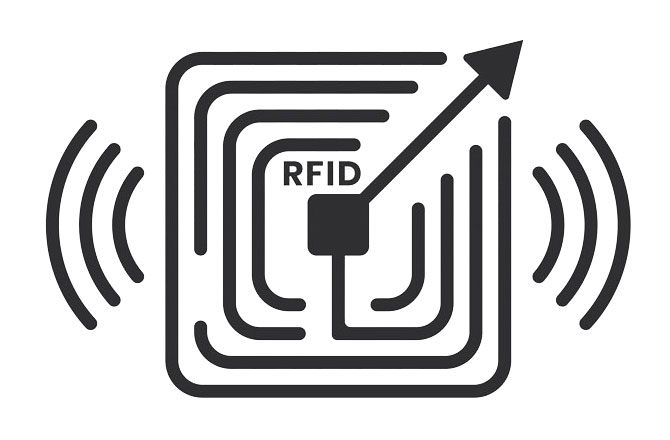What is RFID coupling?
Coupling refers to the method of linking or “coupling” the RFID tag and reader/antenna to one another. Coupling allows the reader to recognize and retrieve information from the tag. Inductive and radiative coupling are the two primary types of coupling in an RFID system. Whether inductive or radiative coupling is used typically depends on the frequency level of the tag.
Inductive Coupling
This type of coupling is called magnetic coupling and is generally used by both low and high-frequency systems. It also explains why low, and high-frequency systems work the way they do.
Generally, the inductive coupling process works like this. When the reader/antenna and tag are within range, the reader/antenna creates a magnetic field. That magnetic field then causes the nearby tag to couple with the reader. When the two couple, electricity is sent from the reader through the conductive antenna of the tag, sending power through the tag and allowing the stored data to be read.
This power transfer which occurs during the inductive coupling process, explains why low and high-frequency tags work the way they do.
First, it explains the read distance. Since the power transfer can only occur within proximity, readers can only interpret inductively coupled tags within a short distance. This is why low, and high-frequency tags need to be within a relatively short range of the reader to be recognized.
Second, it also explains why low, and high-frequency RFID tags usually don’t require an onboard battery. They receive enough power from the reader during the coupling process to power the tag.
Radiative Coupling
The other method, radiative coupling, is generally leveraged for ultra-high frequency tag coupling. It is sometimes recognized as backscatter coupling for reasons we will discuss.
The radiative coupling process begins when the reader starts radiating electromagnetic waves. It sends these waves to any nearby tag to capture and reflect back to the reader (“backscatter”). We can compare this process to standing in a large field, yelling, and waiting to hear an echo.
Radiative coupling can allow for longer read distances since the tag and reader don’t need to be close enough to transfer electricity. However, if the reader is too far away to transmit electricity to the tag, it will require an onboard battery.
As with any process, there are exceptions to the rules. Some near-field UHF tags operate by using inductive coupling as opposed to radiative.
The relationship between a tag and a reader
Coupling isn’t all there is to the relationship between a tag and a reader.
Reading occurs immediately after coupling and involves transferring data, rather than electricity, from tag to reader/antenna. Coupling is like the reader/antenna saying hello to the tag and the tag saying hello in response. Reading is when the reader/antenna follows up the hello with a question, and the tag answers.
The next and final step involves the reader and the operator. People can’t understand radio waves, so the reader must translate the data received into a human-readable form. The reader is either hooked up to a computer or has a small interface that can display human-readable data. The final step also adds a new dimension to the relationship between the tag and the reader. The tag and reader are no longer friends engaging in small talk. They work together to deliver a message to the operator. The tag stores essential information, and the reader/antenna translates it to the operator.
Coupling is a critical factor in how RFID works. The frequency of the tag and the type of coupling used affects how information is accessed. How far away the tag can be from the reader and whether or not the tag will need a battery to run are all essential things to consider when implementing RFID.
The relationship between the tag and reader also adds a deeper dimension to RFID as the processes of reading and translating occur.
